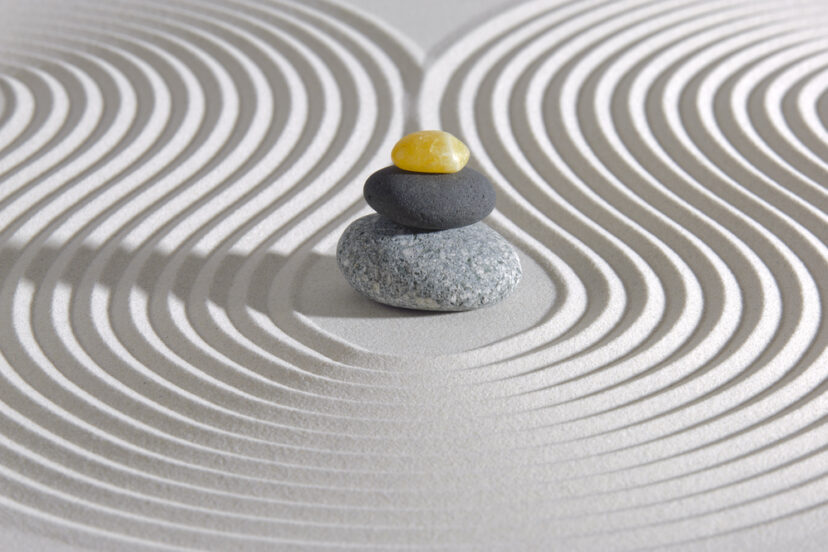Welcome to the captivating world of crystal rock healing or crystal healing, an ancient practice that…
Mindfulness Meditation for Beginners: A Simple Guide to Getting Started

Overview
In today’s fast-paced world, the art of mindfulness meditation has become increasingly important. With a plethora of benefits, ranging from improved mental health to greater focus and productivity, mindfulness can act as a powerful antidote to the stresses of modern life. If you’re a beginner and curious about how to get started with mindfulness meditation, you’re in the right place. This blog post aims to demystify the practice and offer you a simple guide to get started on this transformative journey.
What is Mindfulness Meditation?
Mindfulness meditation is a practice that involves paying attention to the present moment without judgment. While traditional meditation often includes concentration on a particular object, mantra, or the breath, mindfulness meditation expands this focus to any aspect of your present experience—thoughts, feelings, physical sensations, or your environment.
Why Practice Mindfulness?
The benefits of mindfulness meditation are well-documented in scientific literature. Regular practice has been shown to:
- Reduce stress and anxiety
- Improve focus and attention
- Enhance emotional well-being
- Increase self-awareness
- Improve physical health, such as lowering blood pressure and boosting immune function
- Help rebalance your chakras
The Basic Steps
Getting started with mindfulness meditation doesn’t require any fancy equipment or a special place. Here are the basic steps:
1. Find a Comfortable Seat
Choose a quiet space where you won’t be disturbed. Sit comfortably on a chair, cushion, or floor. The key is to maintain a relaxed but upright posture—avoid slouching, but don’t be too rigid.
2. Set a Timer
When you’re just starting, aiming for 5 to 10 minutes is sufficient. As you become more comfortable, you can gradually extend this time.
3. Close Your Eyes or Soften Your Gaze
If you’re comfortable, close your eyes. Alternatively, you can keep your eyes open but soften your gaze by focusing on a point in front of you.
4. Focus on Your Breath
Bring your attention to your breath. Notice the sensation of air moving in and out of your nostrils or the rise and fall of your chest or abdomen. You don’t need to control your breath—simply observe it.
5. Observe Your Thoughts and Emotions
As you focus on your breath, thoughts and emotions will inevitably arise. The key here is to observe them without judgment. Acknowledge their presence and gently bring your focus back to your breath.
6. Conclude Your Session
When the timer goes off, take a few moments to sit quietly. Open your eyes, take a deep breath, and stretch your arms and legs. Congratulate yourself for taking the time to engage in this practice.
Common Challenges and Solutions
1. Wandering Mind
If your mind wanders frequently, don’t worry—that’s completely normal. Each time you notice that your mind has wandered, simply bring your attention back to your breath. This act of noticing and refocusing is the practice of mindfulness.
2. Physical Discomfort
Sitting for even a short period can sometimes result in physical discomfort. Feel free to adjust your posture or even stand up briefly to relieve the discomfort.
3. Unrealistic Expectations
Don’t expect immediate results. Mindfulness is a skill that takes time to develop. The more consistently you practice, the more benefits you’ll experience.
Additional Tips
- Consistency is Key: Aim to practice daily, even if it’s just for a few minutes.
- Explore Guided Meditations: Numerous apps and websites offer guided sessions, which can be particularly helpful for beginners.
- Be Compassionate: Remember, the goal is not to “empty your mind,” but to observe your experience without judgment.
Overview Conclusions
Mindfulness meditation is a simple yet profound practice that can yield numerous benefits for your mental, emotional, and physical well-being. It is accessible to everyone and doesn’t require anything other than your willingness to engage with the present moment. So why not take a few minutes out of your day to begin this transformative practice? Check out our Power of Mindfulness Guide for Beginners here…
Now, let’s explore more specifics of mindfulness meditation:
A Closer Look at Mindfulness Meditation
So you’re thinking about diving into the world of mindfulness meditation, huh? Well, kudos to you for taking that first step towards a potentially life-changing practice. However, just like anything worth doing, mindfulness meditation has its own set of do’s and don’ts, risks and rewards. Don’t fret; I’m here to guide you through it.
What Is Mindfulness Meditation?
The Core Principles
Mindfulness is all about being fully present, right here, right now. No distractions, no daydreams—just you, tuned into the present moment. Imagine watching a beautiful sunset, completely absorbed in the colors and sounds around you. That’s mindfulness.
The Benefits
It’s a game-changer, really. From reducing stress and anxiety to boosting your focus, the perks are endless. But here’s the kicker—while it sounds like a magic potion, it’s not without its caveats.
Why Should Beginners Be Cautious?
The Risk of Overwhelming Emotions
Here’s the thing—mindfulness can sometimes stir up the emotional pot. You might start revisiting past traumas or anxieties. Imagine flipping through an old photo album you haven’t opened in years; it can be overwhelming.
Physical Discomfort
Ever tried sitting in one place, legs crossed, for an extended period? Trust me, it’s not always as comfy as it looks in those Instagram posts.
Setting the Stage for Safe Practice
Starting Small
Rome wasn’t built in a day, and neither is a mindfulness practice. It’s like learning to swim; you don’t start by diving into the deep end.
The Importance of Posture
Don’t underestimate the power of a good posture. Think of it like building a house; you want a solid foundation.
Mindful, Not Mind-Full: Common Mistakes to Avoid
Overthinking It
Being mindful doesn’t mean your mind should be ‘full.’ It’s easy to misconstrue this and end up more stressed than when you started.
Unmanaged Expectations
If you’re expecting to reach nirvana in your first session, you’re setting yourself up for disappointment.
Guided vs. Unguided Meditation
The Pros and Cons
Should you go solo or have someone guide you through it? Each has its merits and drawbacks, kinda like choosing between a manual and automatic car.
Mindfulness Meditation and Existing Health Conditions
Mental Health Conditions
If you’re dealing with mental health issues, mindfulness can either be a boon or a bane. It’s like walking a tightrope—you need balance.
Physical Health Conditions
Got a back problem or other physical ailments? Mindfulness could either relieve you or make things worse. It’s crucial to know when to hit pause.
Mindfulness in Everyday Life
Simple Techniques for Day-to-Day Mindfulness
You don’t have to sit in lotus position to practice mindfulness. You can do it while washing dishes, walking, or even during a hectic workday.
Additional Resources
Look, there’s a wealth of information out there—from books and podcasts to apps and courses. The resources are abundant; you just have to reach out and grab them. As a starting point, check out this online Mindful Souls company for meditation supplies and related products. Another resource company to consider is Renoo Meditation Goods – click here to learn more.
Conclusion
So there you have it, a comprehensive look at what mindfulness meditation has to offer, and the caution signs to look out for. Remember, the journey of a thousand miles begins with a single step, but it’s crucial to watch your step. Happy meditating!
FAQs
- Can mindfulness meditation have negative effects?
- Yes, especially if practiced incorrectly or without adequate preparation. That’s why it’s crucial to be aware of the potential risks.
- Is it necessary to sit in a particular posture for mindfulness meditation?
- No, what’s important is to find a comfortable position that allows you to focus on your meditation.
- Can I practice mindfulness meditation if I have a mental health condition?
- Consult your healthcare provider for personalized advice. Mindfulness meditation is not a replacement for professional medical treatment.
- Do I need a guide or teacher to practice mindfulness meditation?
- While not strictly necessary, a guide can offer helpful direction, especially for beginners.
- How long should my first mindfulness meditation session be?
- Start with short sessions, perhaps 5-10 minutes, and gradually increase the duration as you become more comfortable.
Happy meditating!


